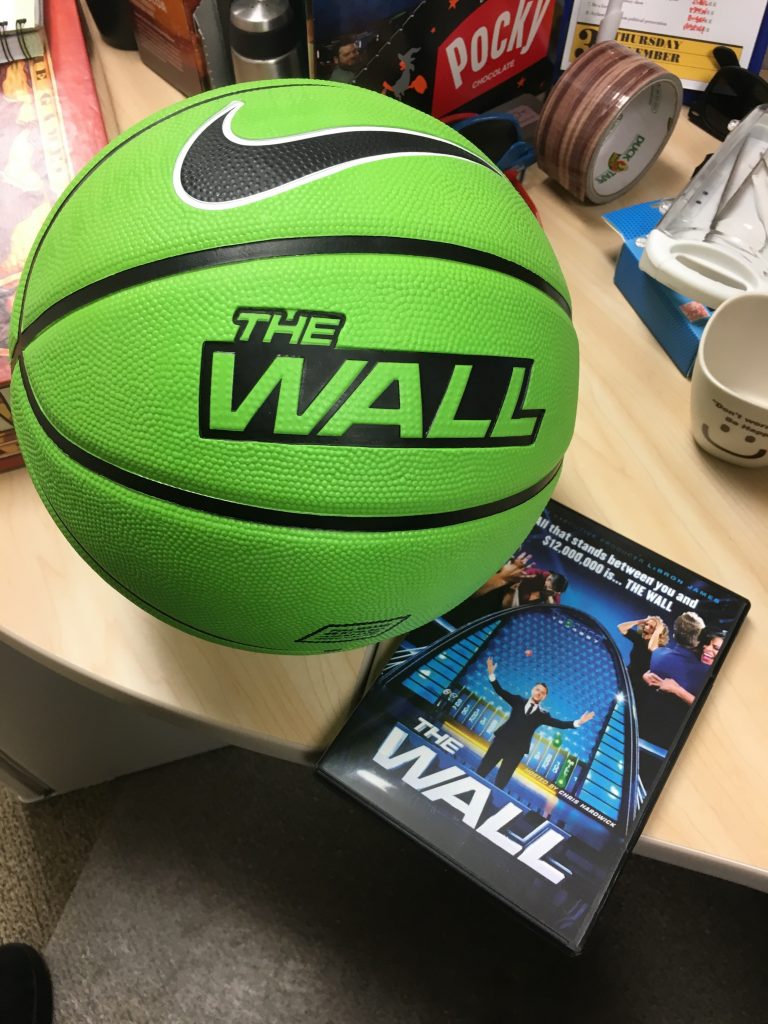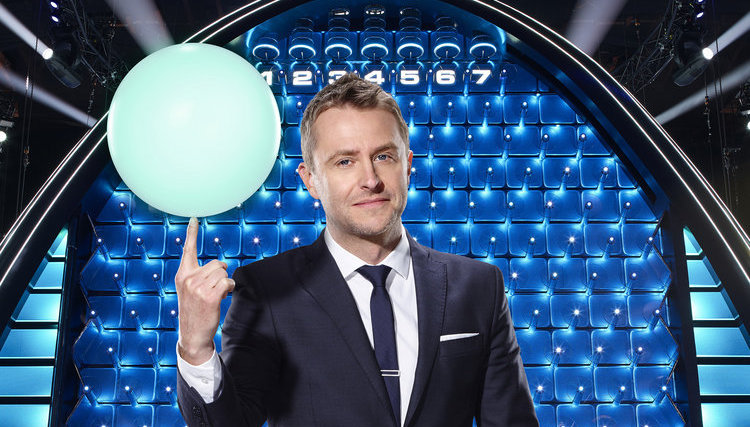
It's flashy, it's got potentials for huge money, but some glaring gameplay issues form cracks in The Wall.
Review: The Wall
It's a giant wall, but will the cracks in the wall take it down?
After the success of ABC’s Sunday Fun and Games this summer, other networks are coming back around to the game show genre to fill their off-season schedules. NBC’s attempt of a new big-money game show is The Wall, hosted by @Midnight host Chris Hardwick and executive produced by, according to IMDB, Spongebob Squarepants voice actor and actor in Amy Schumer’s Trainwreck Lebron James.
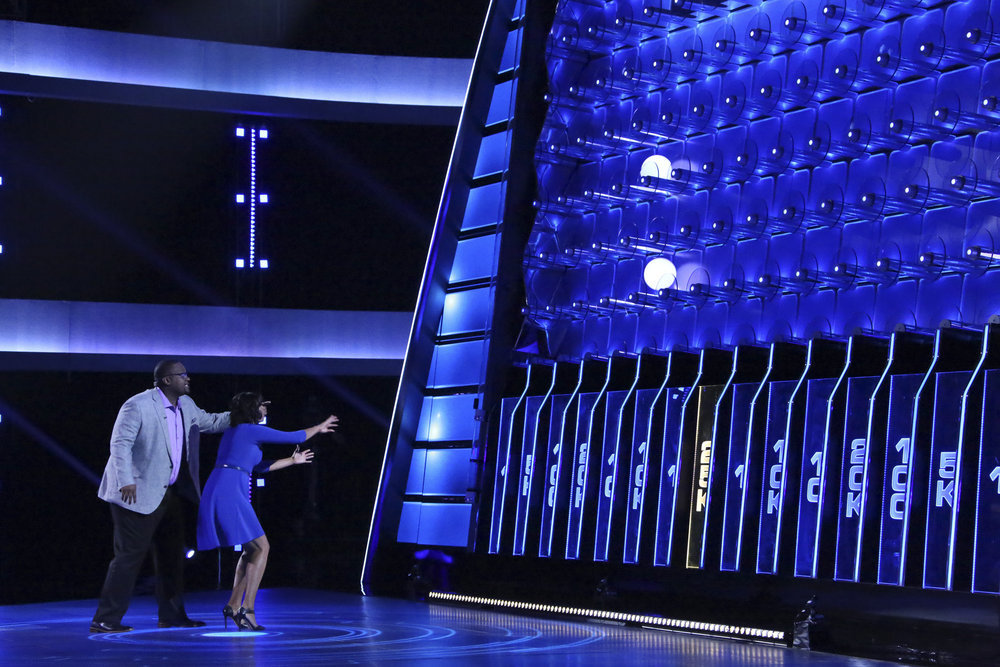
The showcase set piece of the show is a 40-foot Plinko-esque wall with 7 drop zones and 15 targets, with values that start at $1 and through the course of the show, increase to $1,000,000. Contestants load the machine with big color-changing bouncy balls and the machine drops them down and tension is automatically generated by the systems of gravity and physics.
Contestants, always a team of two, are chosen for their television friendliness and multi-million-dollar deservedness. The screener episode we were sent had a couple who had done a lot of charity work. Hardwick talks up their good deeds and how much they deserve a lot of money, which seems to be par for the course with Lebron James-produced works: people who have given a lot deserve to have their stories heard and they deserve something for their good deeds. In and of itself, the goal is noble. The risk that a show runs when looking for people like this is that they tend to get Central Casting-type over-caffeinated contestants, and that’s exactly what The Wall found.
The set, while dark and blue-toned, is imposing and impressive. The Wall itself is a 4-story pegboard set on top of a giant video-wall. I wouldn’t mind if The Price is Right took a cue and put a responsive video board under the Plinko pegboard. The soundtrack is generic and nondescript, but by no means offensive. On-screen graphics looked good in our review copy, though we were warned that it might not be final. As an emcee, Chris Hardwick is his usual effervescent self, always on the side of the contestants, providing energy where needed. He keeps the game moving as fast as the editors of the show allow him to.
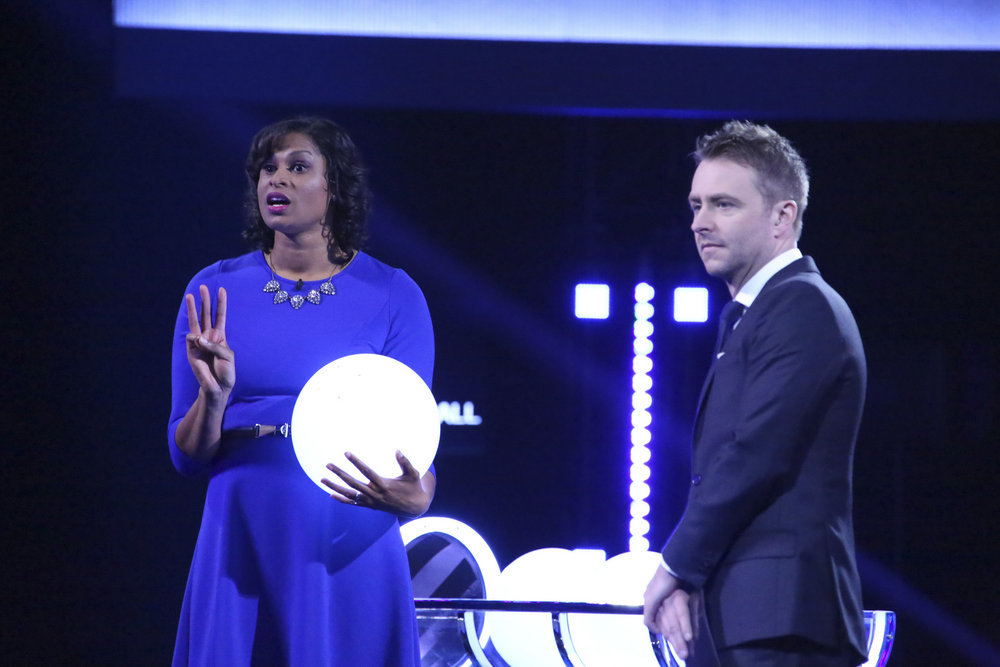
The game is where this show really falls flat. There are 4 rounds to the show. In the first round, the team work together. They’re shown a question with two possible choices. Three balls are loaded into The Wall in positions 1, 4 and 7, and act as both a question value indicator and a question timer. Once the answers to the question are revealed, the balls start dropping, and the team must lock in an answer before any of the falling balls land into one of the value targets. If the team gets the question right in time, the balls turn green and the value of the balls get tallied up and added to the team’s score. If the team gets the questions wrong or a ball lands in a target before the team locks in an answer, the balls turn red and the value of the balls gets subtracted from the team’s score. The team can only advance if they have a positive dollar amount. This is the only point in the game where the team can end up with a negative dollar amount. If the players make it out of round 1, the amount they end the round is their guaranteed prize.
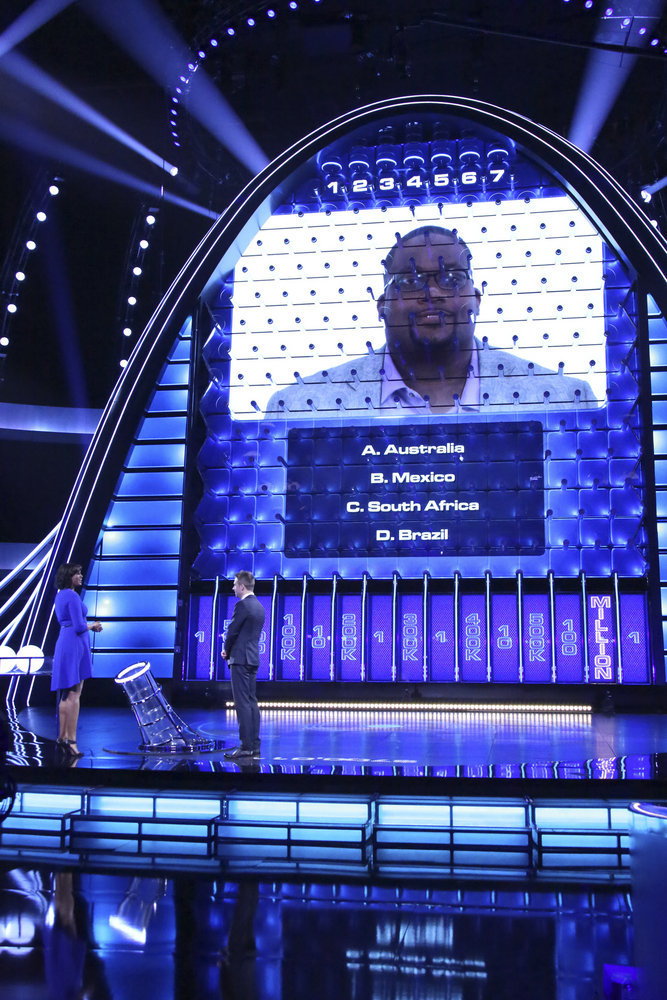
In the next 3 rounds, the team gets split up, Separation Anxiety-style. One player is sequestered backstage and answers questions. The front-of-house player is in charge of putting balls to The Wall (Sorry.) , which now has an increased top prize. (The last round of ball-dropping has a Million Dollar top slot.) Round 2 starts with two free green balls placed in two different drop zones. (Round 3 starts with four.) The next 4 questions are linked to questions. The answers to a question are revealed, then the front-of-house player must predict whether the player will get the question right or wrong, and load the appropriate drop zone. The big dollar value in each round is offset to the right, and Pascal’s Triangle tells us that even in a pegboard, placing a ball dead center above a target gives it the highest probability of landing in that target. So, the strategy is: if you think your partner will answer correct, put the ball on the right side of the board. If you think otherwise, move it to the left. Once a drop zone is selected, the sequestered player is given the question and possible answers. (Round 2 has three potential answers, Round 3 has four potential answers.) If the player is right, the ball turns green and the value it eventually lands on is added to the total. If the player’s wrong, red ball go bounce bounce bounce.
At the end of each round, balls are dropped in the same drop zones selected at the beginning of the round. These balls, however, are red balls. The last two main rounds of this game end with the players losing money—potentially ALL their money. Let me block quote that because for a game that says that contestants are chosen because they deserve a lot of money, it’s a weird shitty way to handle the balancing of the game:
The last two main rounds of this game end with the team losing money—potentially ALL their money.
There’s a few different ways where the game could be balanced better without forcing players to end the game with a guaranteed loss of money. Even Million Pound Drop’s final round was all-or-nothing, and skill and knowledge came into play. No game should end with players who could potentially play a perfect game be forced to take a drop in score for no other reason than “that’s how the game works.” It screams “we built a giant wall; let’s make a game show” and that’s not the best look.
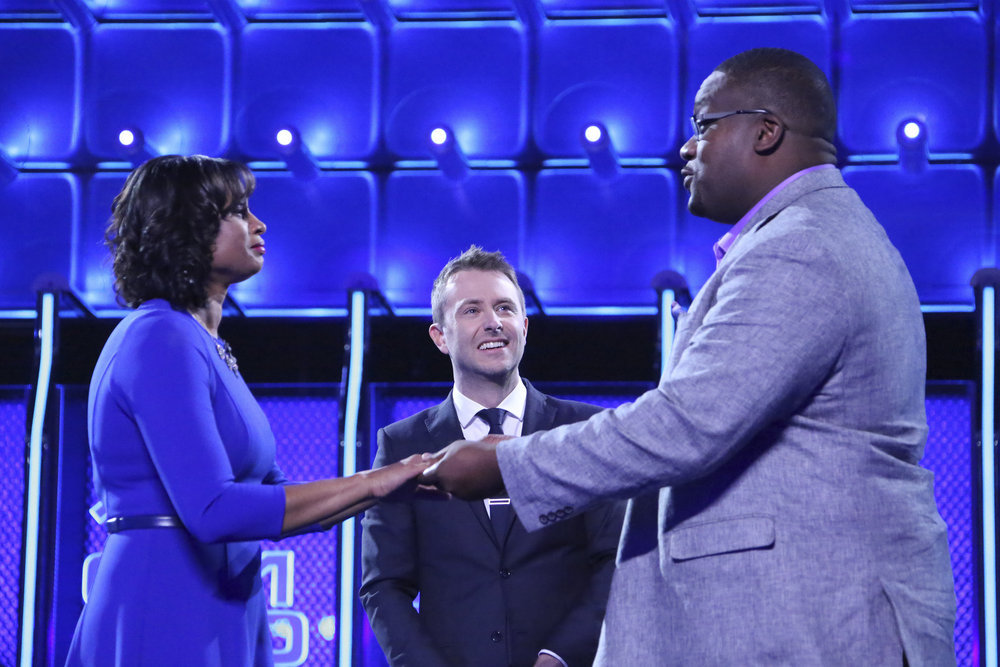
The final round’s gambit is equally ludicrous. The sequestered player, to this point, has no idea how many questions he or she has gotten right or wrong. Chris Hardwick sends a contract via pneumatic tube with two options: take the money that they secured after the first round, or come back onto the stage and accept whatever money was won in the game while he or she was sequestered. The players then reunite face-to-face not unlike a wedding and have emotional, heart-felt speeches explaining their decision making and how much money they could have or did win, not unlike a wedding. Hardwick steps back, standing in the priest’s stage marker but saying nothing except “this-was-The-Wall-goodnight.”
This hour-long show could easily be fast-forwarded into a tight 20-minute package, cutting a lot of unnecessary fluff, between contestant backstories and loads of hemming-and-hawing about what drop zone to plot their balls on. The front game construct of ending each round with automatic money losses, even if the total is as low as $1, feels so gross and unfulfilling to watch. Why are the nice people getting penalized for no reason other than “that’s the rules this round?” Throughout the game, the lowest dollar amount available is a steady $1, which seems extra annoying in later rounds. For all the effort put into constructing The Wall itself, it’s clear that the producers didn’t put nearly as much time in the structure, balance and flow of the game itself. While the show’s intentions are good, the set is nice, and Hardwick should think about hosting more things on TV ‘cuz it’s not bad, the game is incredibly and unnecessarily weak to the point that one episode of the show was enough for me, no matter how much money contestants end up winning. (And while we can’t spoil anything, we can say that if you’re a fan of just people winning a fuckton of money, you might want to watch The Wall.)
I will say that NBC was nice enough to send me a bright green Nike The Wall basketball. But, just like the show it’s branded with, it was a little flat.
